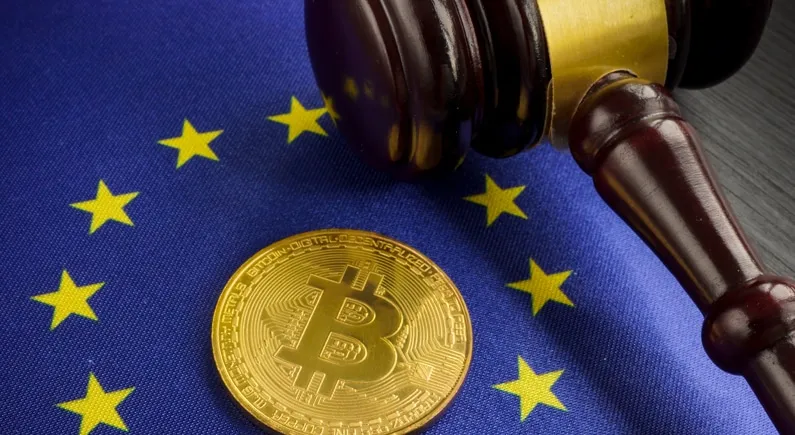The cryptocurrency market has often been described as a frontier of finance—volatile, disruptive, and global. Yet, the introduction of exchange-traded funds (ETFs) tied to Bitcoin (BTC) and Ethereum (ETH) has gradually bridged the gap between traditional finance and digital assets. ETF approvals are not just bureaucratic milestones; they act as catalysts for price movement, institutional adoption, and long-term legitimacy of crypto as an asset class.
This article explores the timeline of BTC and ETH ETF approvals, the market reactions to these events, and the institutional adoption trends that follow. By examining these dynamics, we gain a deeper understanding of why ETF approvals are often hailed as turning points in the journey of top crypto performers.
What Is a Crypto ETF and Why Does It Matter?
A crypto ETF is a regulated investment vehicle that allows investors to gain exposure to cryptocurrencies without directly holding the assets. Instead, the ETF tracks the price of BTC or ETH and trades on traditional exchanges alongside stocks and bonds.
Key reasons ETFs matter:
- Accessibility – Retail and institutional investors can buy crypto exposure through brokerage accounts without wallets or exchanges.
- Regulatory Oversight – ETFs operate under securities laws, providing a layer of compliance missing from direct crypto trading.
- Liquidity and Trust – ETFs are backed by trusted custodians, which reduces fears of hacks or mismanagement.
In short, ETFs lower barriers to entry and normalize crypto within traditional portfolios.
The Timeline of BTC and ETH ETF Approvals
1. Early Attempts and Resistance (2013–2017)
- In 2013, the Winklevoss twins filed the first Bitcoin ETF proposal with the SEC.
- The application was rejected due to concerns over market manipulation, custody, and liquidity.
- For years, regulators consistently denied similar filings, reflecting the broader distrust of crypto in its early days.
2. The Breakthrough of Bitcoin Futures ETFs (2021)
- In October 2021, the U.S. approved the ProShares Bitcoin Strategy ETF (BITO), based on futures contracts rather than spot BTC.
- This marked a significant step, though many criticized futures ETFs for tracking inefficiencies and higher costs compared to spot ETFs.
3. The Long-Awaited Spot Bitcoin ETFs (2024)
- After years of resistance, regulators finally approved multiple spot Bitcoin ETFs in early 2024.
- This was a watershed moment, signaling regulatory acceptance of direct BTC-backed financial products.
- Firms like BlackRock, Fidelity, and Grayscale played pivotal roles in pushing this forward.
4. Ethereum ETF Approvals (2024–2025)
- Following Bitcoin’s precedent, Ethereum ETFs began gaining traction.
- Futures-based ETH ETFs were approved first, with spot ETH ETFs expected (or already approved in some regions) as regulatory comfort grows.
- These approvals cement Ethereum’s role as the second pillar of institutional crypto exposure.
What Market Price Impacts Do ETF Approvals Trigger?
ETF approvals often act as major bullish catalysts—but with nuanced outcomes.
1. Anticipation Rally (Buy the Rumor)
- Before approval announcements, BTC and ETH prices often surge.
- Traders speculate on inflows from institutional investors, driving pre-approval rallies.
- Example: Ahead of the spot BTC ETF approvals in 2024, Bitcoin rallied significantly as optimism built.
2. Post-Approval Volatility (Sell the News)
- Ironically, immediate price reactions to approval often include sharp pullbacks.
- This occurs because short-term traders lock in profits after the event.
- Example: Following the ProShares Bitcoin ETF launch in 2021, BTC initially spiked but quickly corrected.
3. Long-Term Bullish Effects
- Over months and years, ETF approvals have generally supported upward price trends.
- They create sustained demand pipelines from retirement accounts, asset managers, and family offices.
- The “buy once, hold forever” nature of institutional investors reduces circulating supply.

How Do ETFs Influence Institutional Adoption?
1. Legitimizing Crypto in Traditional Finance
- ETFs give conservative investors a regulated pathway into crypto markets.
- Pension funds, insurance companies, and mutual funds—entities previously barred from direct crypto—can now allocate safely.
2. Portfolio Diversification and Hedge Demand
- Institutions increasingly view BTC as “digital gold” and ETH as a tech investment, akin to owning shares in the internet’s infrastructure.
- ETF wrappers allow them to diversify portfolios with non-correlated assets.
3. Inflow Data as a Sentiment Indicator
- Tracking ETF inflows and outflows has become a reliable metric of institutional sentiment.
- Positive flows often correlate with bullish price momentum in BTC and ETH.
4. Global Ripple Effect
- U.S. approvals encourage similar moves abroad.
- Canada, Europe, and Asia have already launched crypto ETFs, showing global convergence in adoption.
Case Study: Spot Bitcoin ETFs (2024)
The approval of spot Bitcoin ETFs in early 2024 provides a real-world demonstration of ETF impact:
- Price Surge: Bitcoin rallied in anticipation, surpassing $40,000.
- Volatility: A brief correction followed approval as short-term traders took profits.
- Institutional Inflows: Billions of dollars flowed into BlackRock’s and Fidelity’s ETFs within weeks.
- Market Legitimacy: Analysts began revising long-term BTC forecasts upwards, citing institutional adoption.
Risks and Limitations of ETF-Based Adoption
While ETFs are a net positive, they also introduce risks:
- Centralization Concerns – ETFs concentrate custody in a few large financial institutions.
- Detachment from Decentralization – Retail investors may hold exposure but never interact with the underlying blockchain.
- Regulatory Whiplash – Approvals can be reversed or restricted in certain jurisdictions.
- Price Disconnects – Futures ETFs especially may diverge from spot markets, creating inefficiencies.
Lessons for Investors
- Expect Volatility Around Approvals – “Buy the rumor, sell the news” patterns are common.
- Focus on Long-Term Trends – The real value lies in sustained institutional inflows, not short-term pumps.
- Diversify Exposure – ETFs are convenient, but direct crypto ownership still offers benefits like staking and yield opportunities.
- Watch Global Regulatory Momentum – Approvals in one region often foreshadow adoption in others.
Conclusion: Are ETFs a Turning Point for BTC and ETH?
Yes—ETF approvals represent milestones of legitimacy, adoption, and growth for the crypto industry. While they trigger short-term volatility, the long-term effects are undeniably bullish: more institutional inflows, greater regulatory acceptance, and stronger foundations for BTC and ETH as mainstream assets.
The lesson for investors is clear: ETFs are not the endgame but a gateway. They accelerate adoption by bridging traditional finance and digital assets, laying the groundwork for a future where BTC and ETH are as common in portfolios as stocks or bonds.































